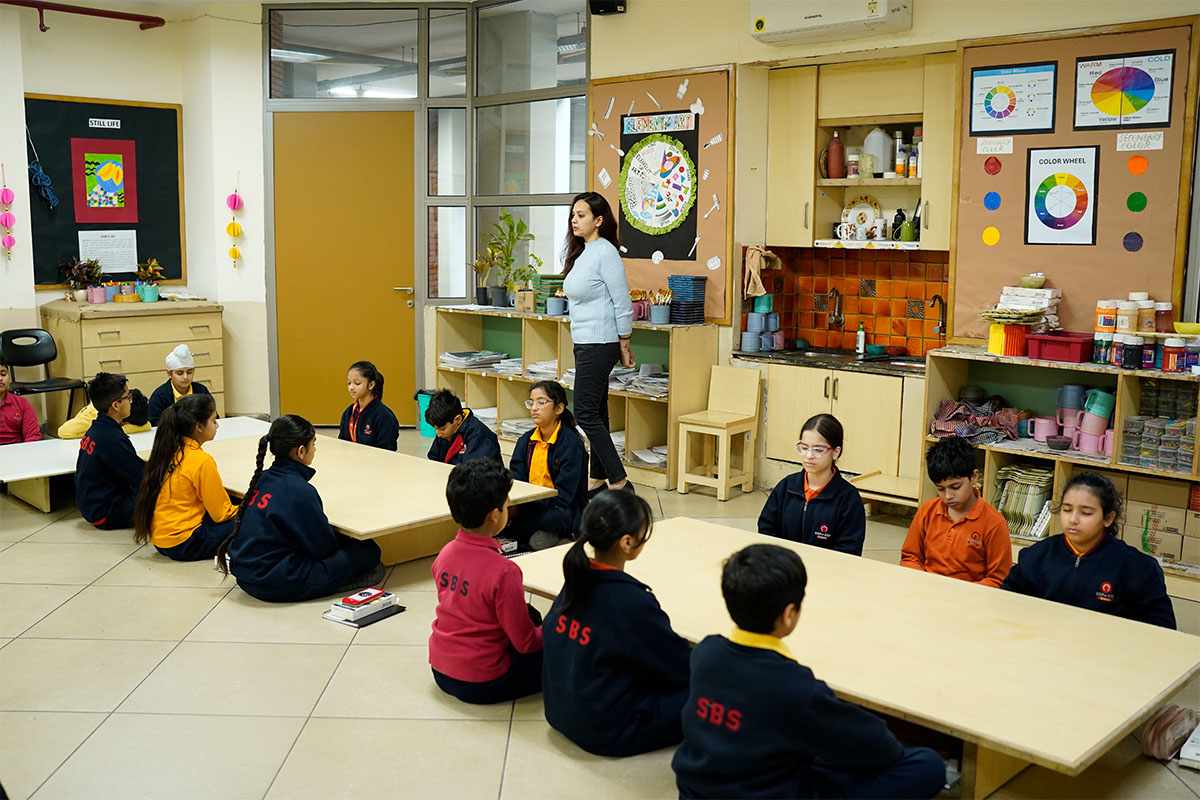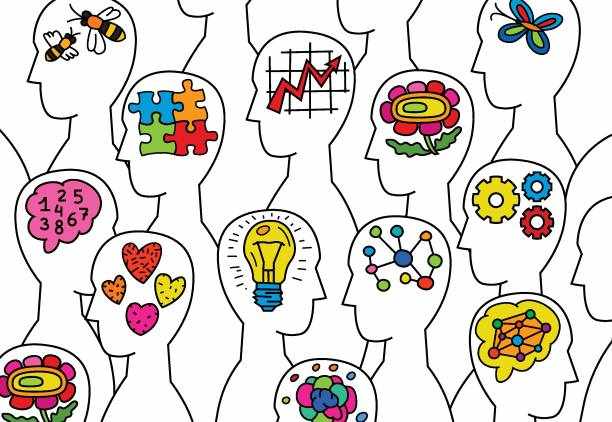Art in the Present Moment: How Mindfulness and Visualisation Shape Young Creative Minds
“The present moment is the only place where life truly exists.” — Eckhart Tolle


“The present moment is the only place where life truly exists.” — Eckhart Tolle



Who said math only lives in textbooks? Mathemania 2025 transformed our school into a hub of excitement, challenges, and fierce but friendly competition — proving that numbers can be just as thrilling as any sport or game. Mathemania is our middle school’s math fest, where students take part in various math-themed games like relay races, treasure hunts and tambola.



In today’s rapidly changing world, the ability to empathize with others and contribute selflessly to society has never been more essential. At SBS School, the philosophy of Seva—meaning “selfless service”—is woven into every aspect of the institution’s ethos. Far beyond a series of activities, Seva at SBS School is a transformative journey that shapes students into emotionally intelligent, responsible citizens armed with compassion and the desire to make a difference.



In today’s rapidly changing world, the ability to empathize with others and contribute selflessly to society has never been more essential. At SBS School, the philosophy of Seva—meaning “selfless service”—is woven into every aspect of the institution’s ethos. Far beyond a series of activities, Seva at SBS School is a transformative journey that shapes students into emotionally intelligent, responsible citizens armed with compassion and the desire to make a difference.



At the heart of every child’s educational journey lies a strong foundation built during the formative years. The Junior School Programme plays a pivotal role in shaping young minds, nurturing curiosity, and building essential life skills. At our CBSE school in Noida, the focus goes beyond academics — it’s about fostering well-rounded individuals who are confident, compassionate, and creative thinkers.



Choosing the right school for your child is one of the most important decisions a parent can make. It lays the foundation for their academic growth, personal development, and future success. As we step into the session 2026–2027 admission season, it’s time to understand how to navigate this exciting journey with confidence and clarity.



In 2025, the role of schools has evolved far beyond academic instruction. Across the globe, there is a growing realization that academic achievement alone is not enough. The real challenge lies in preparing students for a rapidly changing world. This is where skill development becomes essential. Whether in a local school or an international institution, integrating skill-based learning is no longer optional—it’s vital for survival and success in the 21st century.


Parenting today goes beyond nurturing at home—it extends into the classroom and beyond. When schools and families work together, they create a dynamic ecosystem where children thrive academically, socially, and emotionally. By embracing parental involvement in education, parents become active collaborators, supporting teachers and reinforcing learning at home. This partnership is not just beneficial; it is essential for meaningful child development and a shared vision for the student’s growth.


In today’s rapidly changing world, the ability to ask questions, think independently, and adapt to new challenges is far more valuable than rote knowledge. At Step By Step School, Noida, curiosity is not just encouraged — it is cultivated through a thoughtfully designed campus and a holistic learning environment. Every facility, from classrooms to creative studios, has been built to support a child’s journey of discovery, confidence, and growth.


Margaret Atwood wrote, “In the end, we’ll all become stories. Or else we’ll become entities. Maybe it’s the same.” The profundity in the quote can be accessed in various layers and perhaps countless contexts, if the path to accession is clear and objective. As educators we weave stories, multiple ones, often a singular time as we walk into the classroom to teach and learn with our students. We do hope that our students achieve success (however subjective that word is) and significance in life. We wish them happiness and prosperity, but deep down inside we aspire to become stories in their lives. There lies a possible sense of actualisation for a profession that is still not viewed through the deserved lens of reverence in our society. In concert with that lies the method, the pedagogical practices, the struggle between the established conventions and the effervescent demands of a new time. When machines are getting better every second to write stories, can we essentially become the important characters in our students’ stories? The question can be spirally assessed from understanding why story-telling as an art form must be incorporated in everyday pedagogical practices, irrespective of grades, subjects and examination boards.



On a quiet Monday morning, a teacher begins class with two simple adjustments: a visual schedule on the board and a brief settling activity. One student, who often hesitates to begin writing, refers to the visuals, gathers materials, and starts independently. Another student opts to stand during the task, which enables sustained attention throughout. These small shifts — clarity, choice, and predictable structure — illustrate how classrooms can be designed to meet diverse learning needs. They also reflect the central idea of Neurodiversity: when environments anticipate variability, more students access learning.


The Investiture Ceremony in schools is more than a formal school event—it is a celebration of trust, voice, and the promise of student-led change. It reflects the school’s commitment to nurturing young leaders and providing them with a platform to lead with responsibility, vision, and heart. Held with pride and purpose, it marks the beginning of a new chapter in the school’s leadership journey.



At our school, education is not just about academic excellence; it’s about nurturing emotionally intelligent, confident, and resilient individuals who are equipped to face life’s challenges with empathy and strength. We believe that Emotional Intelligence (EI) and resilience form the bedrock of lifelong success—and they are thoughtfully woven into every aspect of our curriculum.



Teaching is no longer confined to textbooks and chalkboards. Today’s progressive schools are redefining the education landscape—not only for students but also for the educators who shape young minds. From innovative teaching methodologies to inclusive staff cultures, working in modern schools is both challenging and deeply rewarding. Especially in educational hubs like Noida, a growing number of opportunities are opening up for educators seeking meaningful careers in institutions that prioritize excellence, collaboration, and growth.



Are you looking for teaching jobs in Noida at a prestigious institution? Step by Step School, Noida, renowned for its commitment to academic excellence and holistic student development, is seeking passionate educators to join our team. If you have the skills, dedication, and enthusiasm to inspire young minds, this is your opportunity to make a difference.


Step by Step School in Noida is renowned for its holistic approach to education, fostering academic excellence and personal growth. The school offers state-of-the-art infrastructure, modern classrooms, and advanced learning resources. It emphasizes extracurricular activities, including arts, sports, and leadership programs, ensuring all-around development. With a highly qualified faculty and a student-centric curriculum, the school nurtures critical thinking and creativity. Recognized as one of the best schools in Noida, it provides a vibrant, inclusive environment for students to thrive. Visit here https://stepbystep.school/
